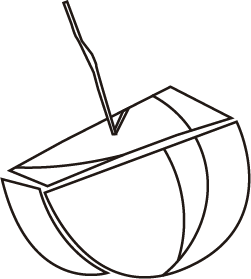THE CATTLE TRACK
 In La Vall de Gallinera there is an extensive network of trails and paths, evidence of the amount of people and animal traffic there was between the inhabited nuclei and the agricultural lands.
In La Vall de Gallinera there is an extensive network of trails and paths, evidence of the amount of people and animal traffic there was between the inhabited nuclei and the agricultural lands.
Throughout history, the main road, known as the royal road, united the various population centres that were scattered across the valley. In addition, it was also used by the inhabitants to move inland or towards the coast. In 1882, this road became the current CV-700 road, thus permitting carriages and motor vehicles to move around.
Many trails and paths originate from this road and from the villages and other areas in the valley which were previously inhabited. Qualitatively, trails and paths were not the same. A trail was not paved and only allowed for one person at a time to walk along it. On the other hand, a path had cobblestones and its width made it easy for a person and, in most cases, a loaded animal to travel along it.
There is a differentiation between two types of denomination, according to the geographical area through which a path runs. Thus, we speak of costeres when we refer to the paths that criss-cross La Solana and the Sierra de L’Almirant. These paths lead to the farming lands of this part of the valley, called Rotes, but also to the neighbouring towns of Vilallonga and L’Orxa.
On the other side of the valley, in the Sierra de La Foradada, the paths are called passets and, in addition to permitting people to reach the lands of this area, which are called serres, it is also a way of getting to Ebo and Alcalà.
There are also about fifteen cattle tracks scattered throughout the area which, like the pens, help us to catch a glimpse of a period in history when livestock activity was of great importance.
The paths have always been of great significance to the inhabitants of La Vall de Gallinera. Various traditions and municipal ordinances are evidence of this. If someone wanted to collect the manure left by the animals in the middle of the path, he had to do it with his hands and no tool could be used, so as not to cause any damage to the path. Older people still remember that the maintenance of these paths was everyone’s responsibility, and with this in mind they dedicated one day a year to repairing them, on the Feast Day of Saint John.
Currently, there are various initiatives aimed at recuperating this network of trails and paths in order to use them for rural tourism, as they are the main means to get to all the heritage sites within the valley.









